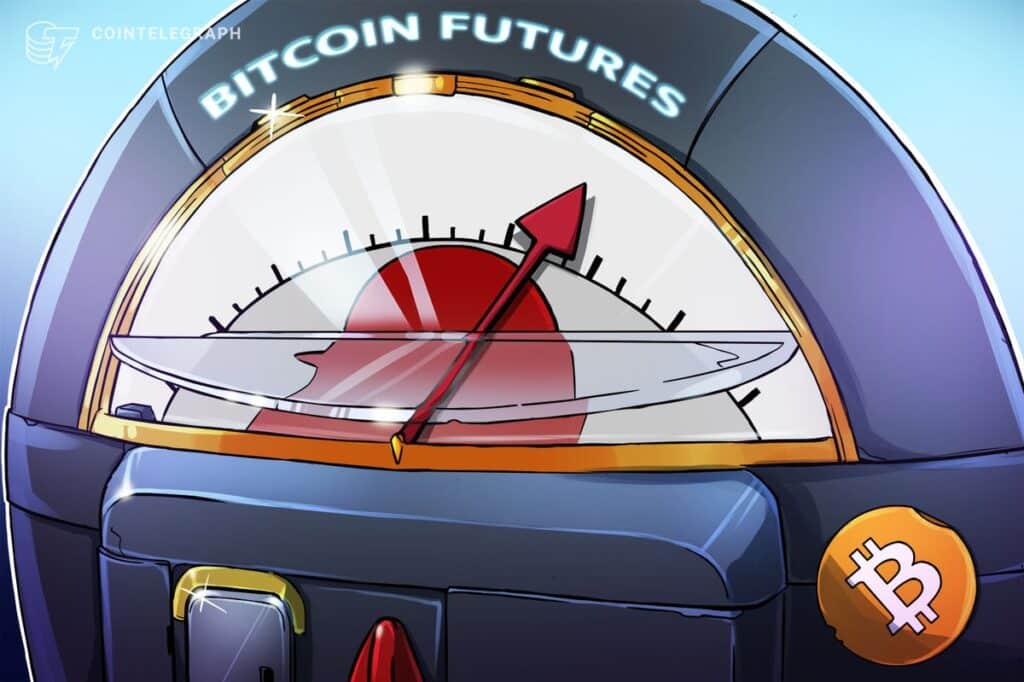Bitcoin Futures Premium Hits 7-Week High: Is The Rally Sustainable?

Bitcoin (BTC) gained 2.5% to $69,400 on June 3, raising hopes that it could regain the $69,000 support level for the first time in 11 days. This positive price movement coincided with a rise in Bitcoin futures premiums, which hit a seven-week high. But what does this mean for the sustainability of Bitcoin's $70,000 rally?
GameStop mania and weak Fed interest rate cut prospects
Some analysts believe that Bitcoin's recent price jump was partly influenced by GameStop's (GME) impressive 36% rally. It's on GameStop stock that raised memories of anti-traditional financial sentiment in 2021 as retail investors co-opted to challenge the status quo. This sentiment seems to have spilled over into the memecoin sector, with Floki gaining 16.5%, Dogwifhat (WIF) 9%, and Bonk 7.5%.
Additionally, Minneapolis' Neil Kashkari's comments on the Federal Reserve Bank (Fed) added to the uncertainty. The Fed official said he did not expect a rate cut anytime soon, citing Americans' strong aversion to inflation. Although this position is not generally shared among federal officials, it is seen as negative for the housing and stock markets. As a result, some investors are turning to alternative investments like Bitcoin.
Global geopolitical tensions have played a role in Bitcoin's recent price action. Australia's decision to order Chinese investors to reduce their stakes in small-scale mining has added to uncertainty in global markets. The move coincided with a 1% gold gain in US Treasuries and a sell-off, with the 5-year yield falling to 4.42% from 4.59% on May 31.
Bitcoin derivatives support further price gains
The Bitcoin futures premium reflects the difference between monthly contract derivatives markets and regular exchanges. Usually 5% to 10% annual premium (basis) occurs to compensate for the extended settlement. Basically, a higher premium suggests that traders are willing to pay more for futures contracts, indicating bullishness.
Bitcoin's 3-month futures premium rose to 15%, marking the highest level in seven weeks. This suggests cautious optimism among traders, which is important to avoid liquidations during unexpected negative price volatility. Again, to assume that this sentiment exists only in the futures markets, one needs to analyze the 25% delta skew of Bitcoin options.
Delta skew measures the relative interest of bullish and bearish options. A negative skew indicates strong demand for call options (buy), while a positive skew indicates a preference for put options (sell). Neutral markets typically have a delta skew of -7% to +7%, indicating relative pricing between calls and options.
Related: Will Bitcoin Benefit From European Central Bank Rate Cut?

Note that the 25% delta skew indicator has remained near -3% over the past week, suggesting that traders are neither overly optimistic nor pessimistic about Bitcoin's short-term price movement. The last time Bitcoin options showed signs of optimism was on May 21st, but that was short-lived as the $71,500 resistance proved difficult to overcome.
The latest data points to a healthy Bitcoin market, with demand driven by a mix of factors including fears of a recession, geopolitical uncertainty and a resurgence of anti-traditional financial sentiment. Key indicators such as the Bitcoin Futures premium and the 25% delta skew suggest cautious optimism among traders, providing a stable basis for further price gains above $70,000.
This article is not intended for general information purposes and should not be construed as legal or investment advice. The views, ideas and opinions expressed herein are solely those of the author and do not necessarily represent the views and opinions of Cointelegraph.














